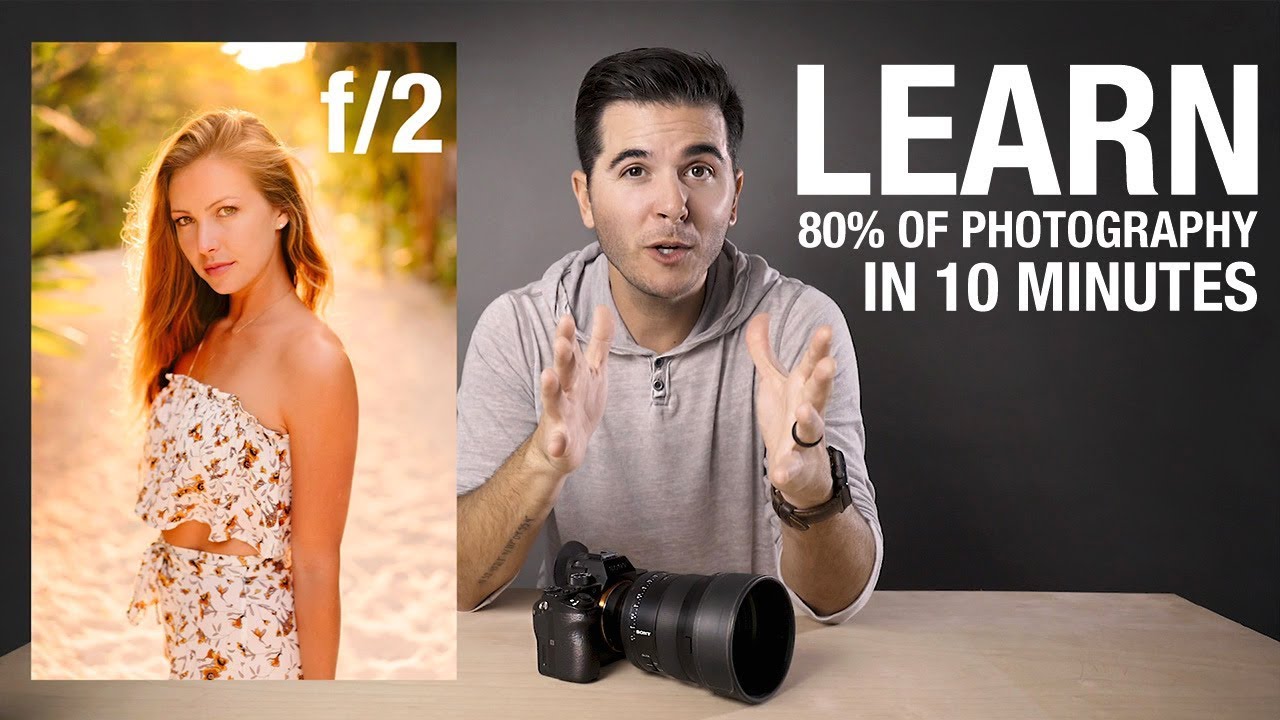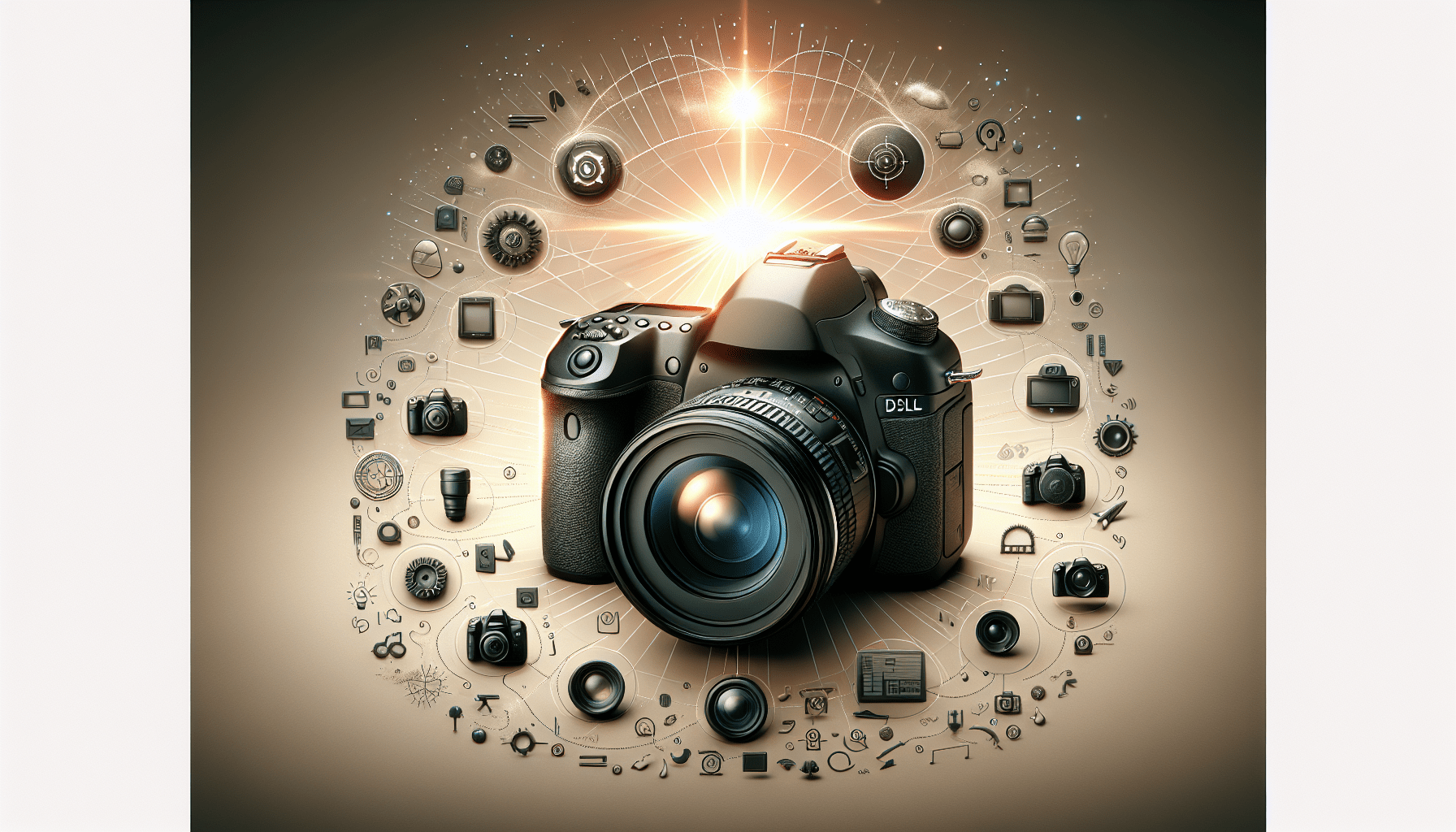Imagine being able to grasp the essentials of photography in just ten minutes! “Photography Basics in 10 Minutes,” a video by David Manning, presents quick and engaging tutorials on the fundamentals. You’ll have all the benefits of joining David’s channel and gaining access to his quirky posts on INSTA and TWITTER, not to mention discounts on his camera gear!
This isn’t just any tutorial- it’s all based on the Pareto Principle, the idea that with just 20% of effort, you can achieve 80% of your desired outcomes. David will expose you to the key components of photography, guiding you to get 80% of the way to great pictures. He also recognizes that it’s not all about rushing to the finish line but to cultivate and nurture that love for photography over time. You’ll learn about ISO in depth, understanding its impact on image quality, and get a sense of why camera body prices can vary so much.
Understanding the Basics of Photography
In this exciting journey of understanding the basics of photography, we will first be introduced to a fundamental principle, the Pareto Principle. This principle is arguably applicable in a wide array of fields, but in our context, it simplifies our approach to mastering photography. The Pareto principle essentially suggests that you can achieve about 80% of needed results with approximately 20% of the total effort. Now, this doesn’t mean you can become an exceptional photographer putting in only a fraction of the work. It instead implies that you may understand and employ 80% of the integral knowledge of photography with 20% of effort; acquiring mastery still demands more deliberate learning and practice.
Photography can initially seem quite complicated, but like studying any new subject, it can be helpful to simplify concepts at first to make it easier to comprehend. This strategy aims to provide you with a solid foundational knowledge, allowing you to understand the distinct layers and complexity that photography offers as you progress. By the end of this article, you should have a basic but comprehensive understanding of photography that embodies 80% of the required knowledge. You will be equipped to capture impressive images and be able to identify and troubleshoot when you aren’t getting the desired results.
Setting Up for Photography
Embarking on any photographic journey always begins with the crucial step of setting up your equipment. A pivotal setting is ISO, as it influences how sensitive your camera’s sensor is to light. The higher the ISO setting, the more sensitive it becomes. You may be tempted to crank up the ISO, thinking this will lead to brighter, better-exposed images. This is far from the truth, however. You need to keep ISO at its lowest possible setting whenever you can because increasing the ISO results in more noise, grain, and other undesirable artifacts in your image. Understanding how ISO works will help you control how your camera responds to light, ultimately affecting the quality of your final image.

This image is property of i.ytimg.com.
Knowing the Role of ISO in Image Quality
Understanding the relationship between ISO and light sensitivity is a key aspect of photography. ISO has a direct effect on the exposure of your image because it determines how sensitive your camera’s sensor is to light. Nevertheless, you must aim to maintain a low ISO level to avoid various repercussions of high ISO on your image’s quality. High ISO settings lead to grainy images, noise, and odd details that can affect the final output. Therefore, it’s essential to properly adjust the ISO in order to achieve optimum results.
Demonstrating How ISO works
To show you how ISO works, we are going to share some test shots taken at varying ISO settings. Comparing these images together will give you a clearer idea of how changing the ISO impacts the quality of your photographs. Take note of the differences between each ISO setting from the lowest to the highest. Pay particular attention to how the noise levels and graininess change as the ISO is increased. By the end of this exercise, you should understand precisely why having a high ISO can lead to grainy and noisy outputs that compromise the quality of your image.

Differentiating Camera Bodies Through ISO capabilities
Here’s a fun fact, not all camera bodies are the same – especially when it comes to ISO capabilities. This is a major reason why there is such a vast range in camera prices. Typically, cheaper ones only have lower ISO support before images start exhibiting significant noise and grain. On the other hand, more expensive models can handle higher ISO settings while keeping noise and graininess at acceptable levels. This means when you’re purchasing a camera, you’re often paying more for the privilege of capturing higher quality images under poor light conditions.
Adjusting ISO Depending on the Environment
Mastering the adjustment of ISO as per your environment can take you a long way in becoming an adept photographer. For instance, under bright outdoor conditions, you can comfortably keep your ISO at 100. When you’re shooting in the shade, it might necessitate pushing the ISO up to 200. If you transition to indoor photography, you are likely to need a higher ISO setting, perhaps in the region of 400.

Maximizing Light in Photography
Light is the lifeblood of photography, so understanding how to maximize it is pivotal. How you position your camera, the direction and strength of light hitting your subject, and your usage of natural light are all practical aspects you can control to enhance image quality. Sometimes, adding an extra light source gives you the extra illumination you need. Balancing and manipulating available light will significantly elevate your photographic results.
Overcoming Challenges with High ISO
Sometimes, you can’t avoid using high ISO settings, especially in low-light conditions. Therefore, it’s important to recognize the common noise patterns that appear in such scenarios. The next step is to understand how post-processing software can help minimize this noise and grain after the photograph has been taken. Choosing the right ISO setting in the first place is critical to avoid unwanted image noise.
Understanding Other Camera Settings
Apart from ISO, getting to grips with other camera settings such as shutter speed and aperture is vital. Shutter speed directly impacts how motion is captured, while the aperture controls how much light enters your camera. Balancing these aspects with the ISO setting can lead you to produce perfect shots.
Conclusion
As we conclude this comprehensive article on photography basics, let’s recap what we’ve learned so far. The Pareto Principle has taught us that with 20% effort, you can grasp 80% of what is vital about photography. ISO is an essential element in photography, influencing light sensitivity and overall image quality. Other key lessons include understanding your camera’s specifications and how to adjust ISO levels based on different light environments.
It’s essential to remember that straying from these photography basics can lead to a host of avoidable issues, including low-quality images. Photography is a lifelong journey of learning, so keep practising and expanding your knowledge base regularly. Happy shooting!
